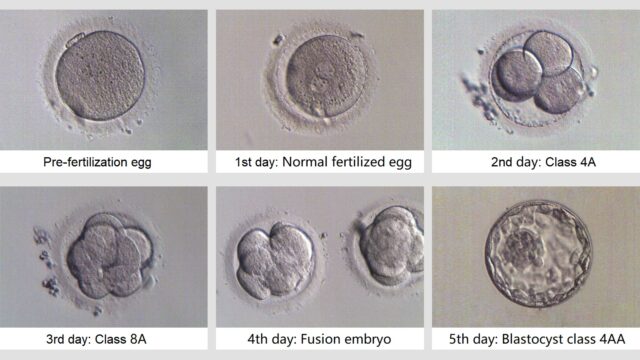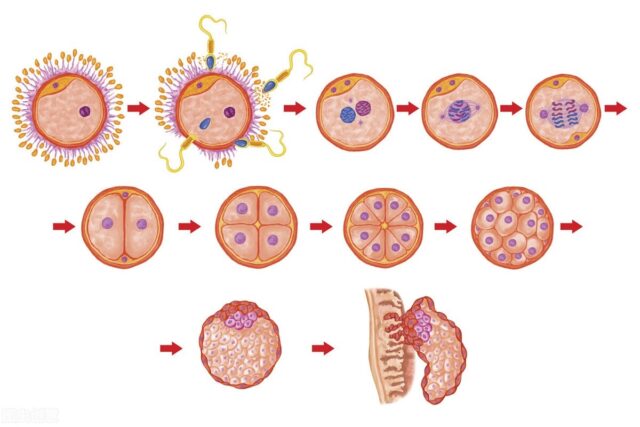IVF: Is the success rate of blastocyst transplantation high?
- Normal Liver Cells Found to Promote Cancer Metastasis to the Liver
- Nearly 80% Complete Remission: Breakthrough in ADC Anti-Tumor Treatment
- Vaccination Against Common Diseases May Prevent Dementia!
- New Alzheimer’s Disease (AD) Diagnosis and Staging Criteria
- Breakthrough in Alzheimer’s Disease: New Nasal Spray Halts Cognitive Decline by Targeting Toxic Protein
- Can the Tap Water at the Paris Olympics be Drunk Directly?
IVF: Is the success rate of blastocyst transplantation high?
- Should China be held legally responsible for the US’s $18 trillion COVID losses?
- CT Radiation Exposure Linked to Blood Cancer in Children and Adolescents
- FDA has mandated a top-level black box warning for all marketed CAR-T therapies
- Can people with high blood pressure eat peanuts?
- What is the difference between dopamine and dobutamine?
- How long can the patient live after heart stent surgery?
IVF: Is the success rate of blastocyst transplantation high?
The proportion of blastocyst formation is also related to the age of women. Younger women have a higher proportion of blastocysts than older women.
In IVF, is the success rate of blastocyst transfer necessarily higher than that of embryo transfer at other developmental stages?
This is a question frequently asked by doctors in reproductive centers and one of the most concerned questions for patients undergoing IVF. I will briefly introduce from the following three aspects
First, let’s understand what a blastocyst is
Once the egg is fertilized, the cells in the embryo will divide and proliferate rapidly in the next few days. By the fourth day, not only the cells divide rapidly, but the embryo also undergoes important metabolic transformations.
By the fifth day-the blastocyst stage, the embryo will contain 75-100 cells and the capacity will increase continuously. The embryo at this stage is a blastocyst.
At this time, the embryo includes trophectoderm, blastocoel and inner cell mass. (The trophectoderm will form the placenta, fetal membranes and umbilical cord, while the inner cell mass will form the fetus), the blastocyst is the final stage of embryo culture in vitro.

Secondly, is it true that the success rate of blastocyst transfer is high?
Identifying good embryos is not an easy task. We cannot judge the quality of embryos only by appearance.
In IVF, there are many embryos that can develop to the 2nd or 3rd day and form the 4~8-cell stage, but only the embryo with the strongest growth ability and the best quality can develop to the 5th day (blastocyst), blastocyst culture , Is to extend the culture time of embryos in vitro, and in this process, inferior or even defective embryos are naturally eliminated, and high-quality embryos will continue to develop into blastocysts.
Therefore, whether the embryo can develop into a blastocyst is also a standard to test whether the embryo is a high-quality embryo. Embryos that can develop into blastocysts have stronger growth ability, and the implantation success rate will increase accordingly.
Finally, are you suitable for blastocyst transfer?
The advantage of blastocyst transfer is that in the process of embryo development to blastocyst, some poor quality embryos are naturally eliminated, and finally the embryos that can develop to blastocyst are transferred back to the uterus.
This can increase the implantation rate of each transfer, reduce the number of embryos transferred back to the uterus each time, and reduce the risk of multiple pregnancy.

It is precisely because the cultivation of blastocysts has higher requirements for embryos, not all embryos can be cultivated into blastocysts, so blastocyst transplantation is not suitable for everyone.
When choosing whether to transfer blastocysts, it is necessary to refer to factors such as the number of fertilized eggs, the age of the woman, whether there is an IVF laboratory and culture system for culturing blastocysts.
The culture of blastocysts takes a long time in vitro and is affected by the outside world.
Laboratory conditions have very strict requirements, so blastocyst culture can only be carried out in a laboratory with very good conditions.
In addition, the proportion of blastocyst formation is also related to the age of women. Younger women have a higher proportion of blastocysts than older women.
Therefore, after egg retrieval, doctors will also consider whether the patient is suitable for blastocyst culture based on various factors, instead of choosing blastocyst transplantation in order to increase the success rate.
IVF: Is the success rate of blastocyst transplantation high?
(source:internet, reference only)
Disclaimer of medicaltrend.org
Important Note: The information provided is for informational purposes only and should not be considered as medical advice.



